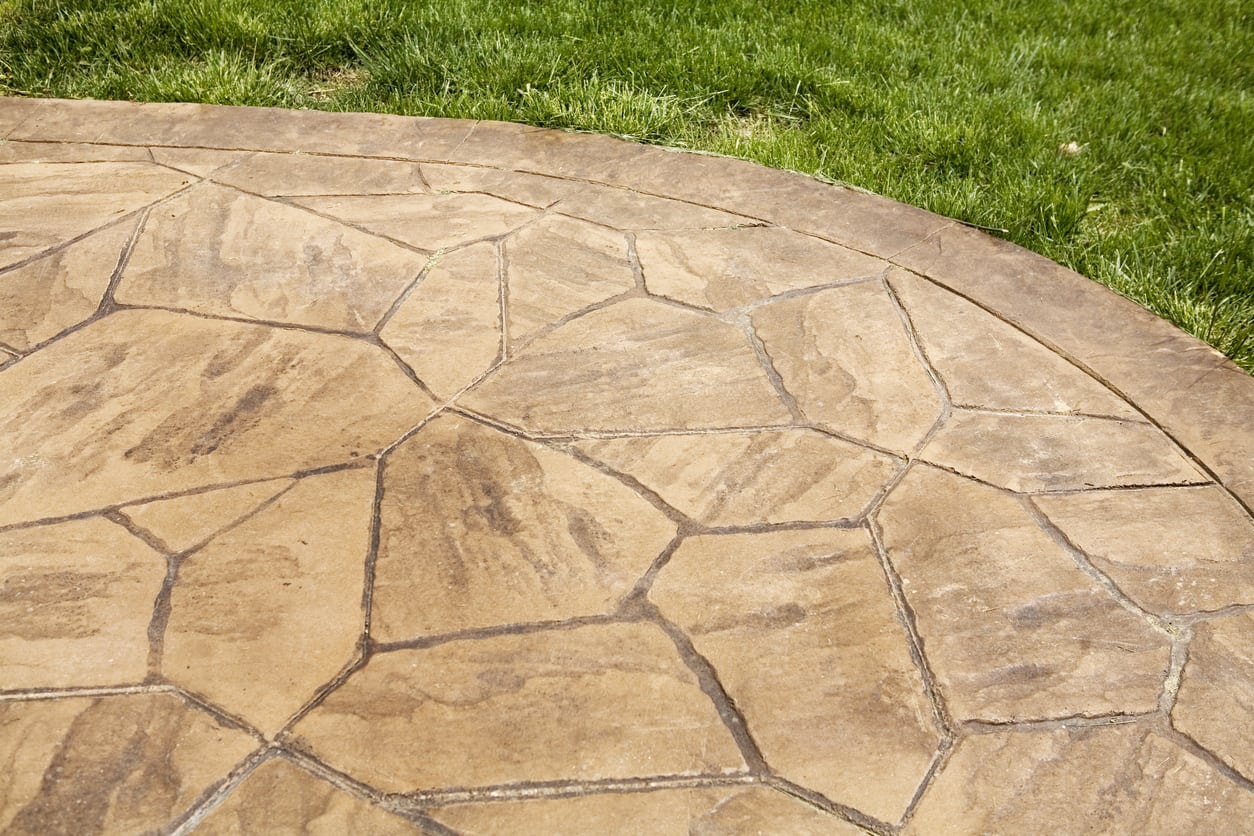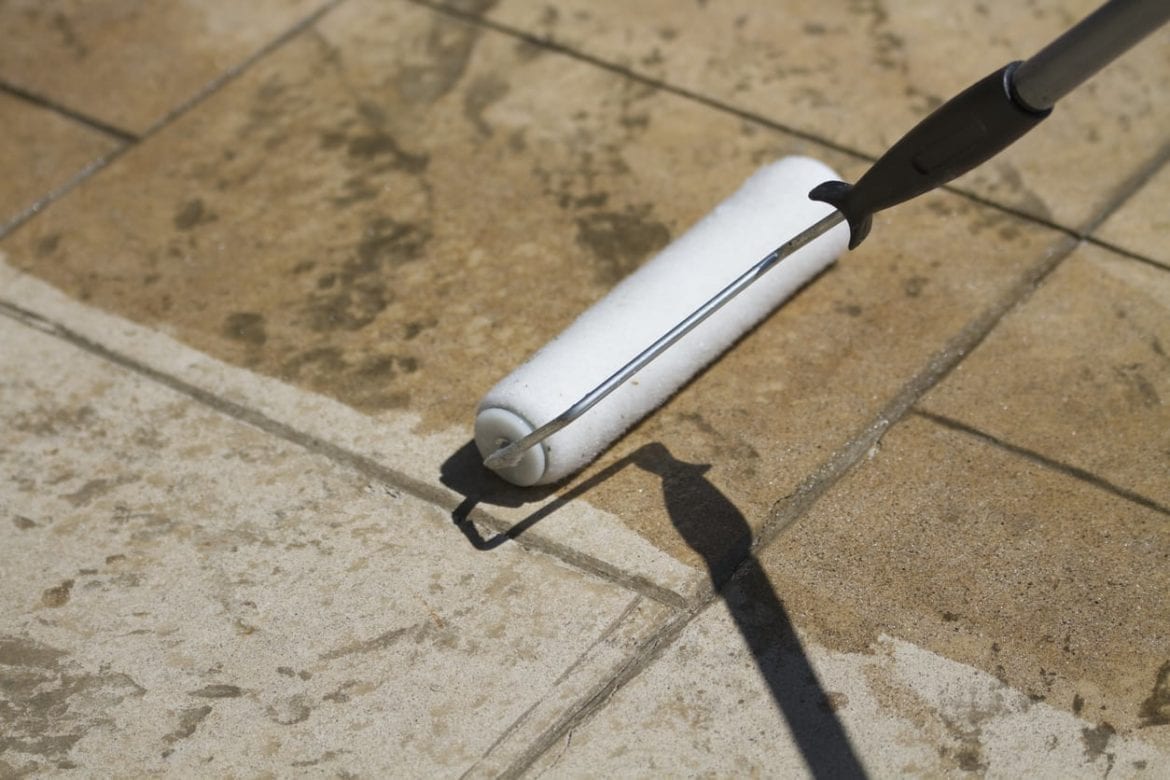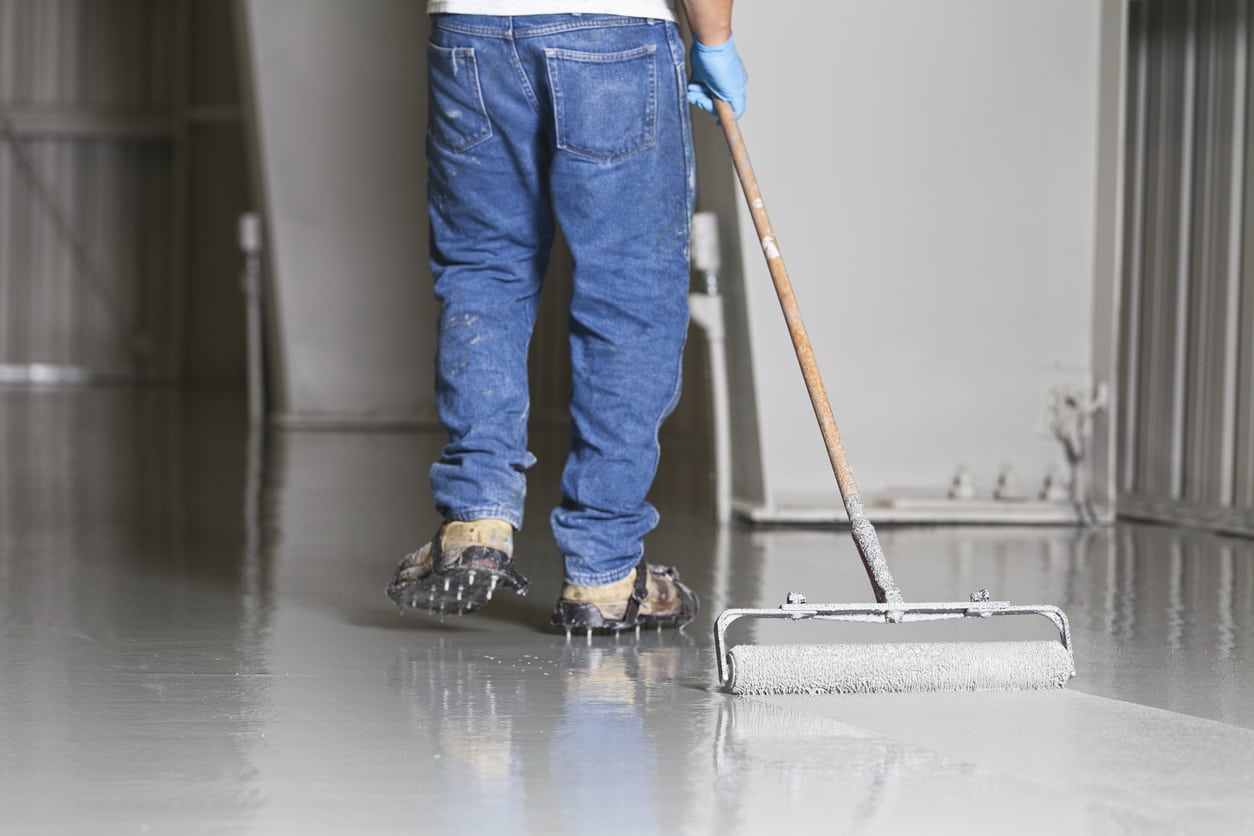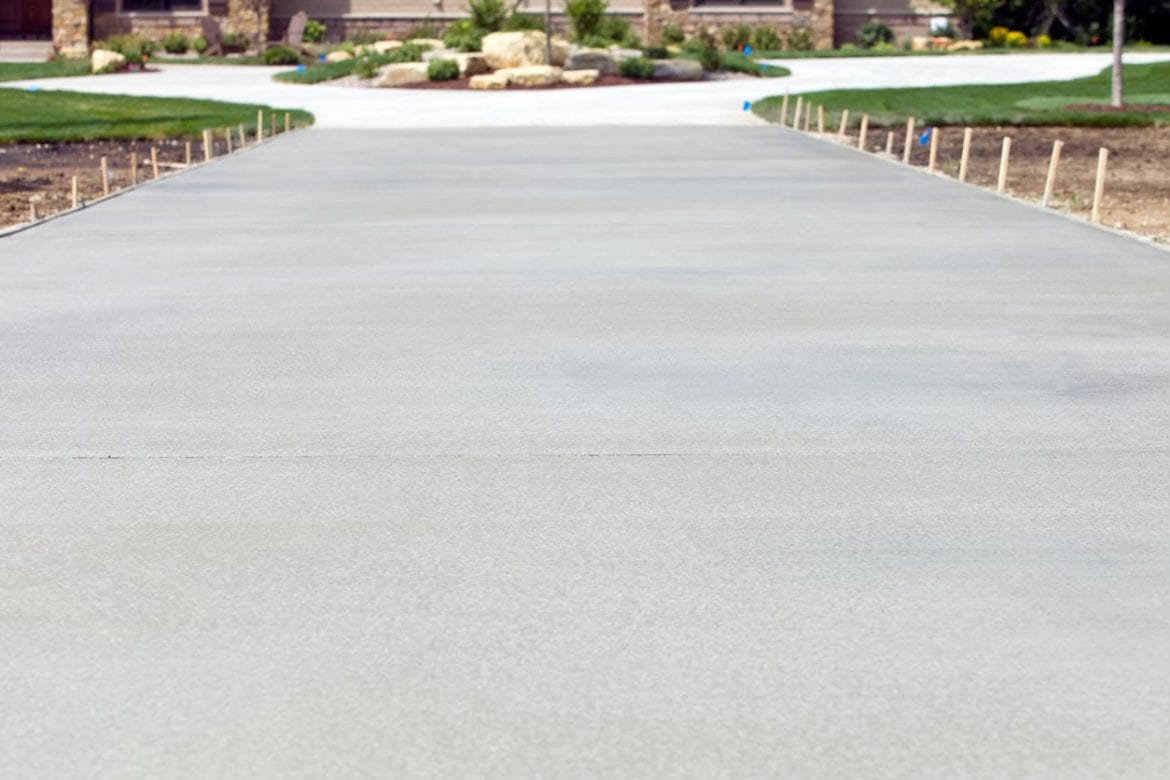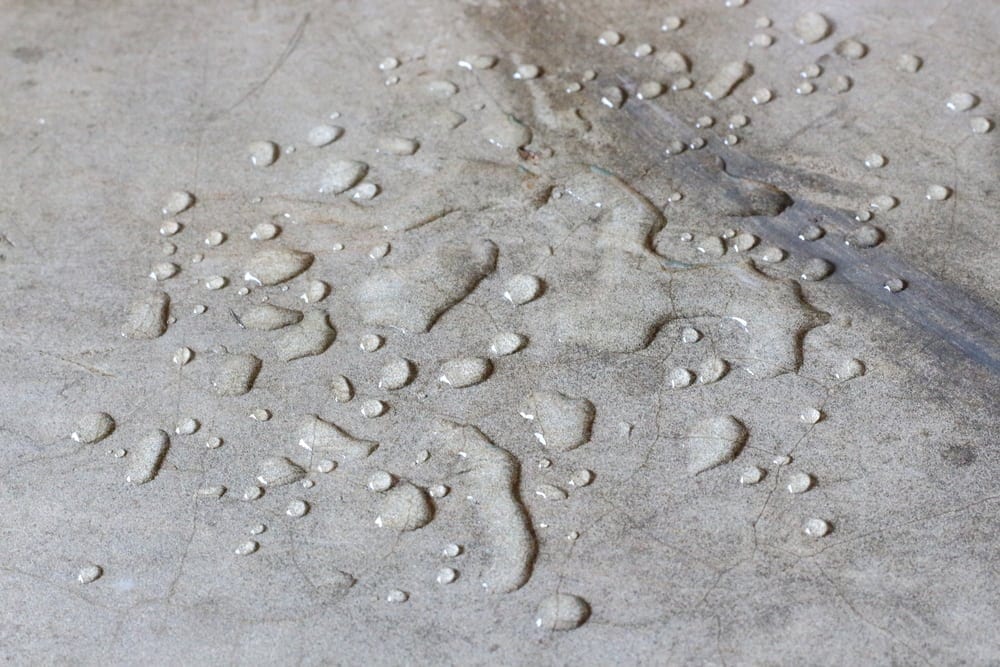As the trees begun to bud and the birds are chirping We are officially welcoming spring! With warmer temperatures and longer days it can mean only one thing – outdoor concrete sealer season has commenced.
With the change of the weather our honey-do lists keep growing. One of the easiest projects you can add to the list is sealing your patio or pool deck. With a plethora of sealing options available on the market – choosing one can seem overwhelming and complicated. But here at Concrete Sealer Reviews, we have tried to make choosing one as painless as possible.
If your patio or pool deck is stamped concrete, nine times out of ten you are going to want to use a high gloss, wet-look sealer to really enhance , darken and bring out the beautiful colors and textures. This finish is typically achieved by using a solvent based acrylic or methyl-methacrylate. Although they are going to have higher VOC’s, (smell or odor during application), they really are the best option to get that decorative look. All that being said if this is the finish you have your heart set on, there is going to be some maintenance involved. Most acrylics need to be reapplied every year to three years depending upon the amount of deicing salt and UV exposure.
If you are not a big fan of the wet look, and are looking for protection without an artificial looking finish, your best bet is going to be a penetrating sealer. Penetrating sealers can range from silicates, siliconates, silanes, siloxanes or blends of these chemistries. For exterior applications, silanes/siloxanes are going to provide the longest lasting protection – especially when exposed to salts, sun, stains and weathering. The water beading or water sheeting effect these sealers boast usually fades after the first few years, but because the active ingredients are able to penetrate into the concrete, protection can last upwards of ten years.
The top concrete sealers for concrete patios are going to be sealers that enhance and beautify the concrete or pavers with out the risk of peeling, flaking or delamination. With patios constant exposure to sun, wind and rain a sealer has to be able to stand up to these afflicting elements. Acrylic sealers are commonly used on exterior decorative surfaces and for good reason. With their finishes ranging from matte, satin and glossy sheens there is a sealer for every aesthetically pleasing application.
Patio sealers are usually available in solvent and water based varieties and it is up to the end use to determine what they are comfortable applying. Although solvent based sealers usually leave a glossier shine they tend to have noxious fumes and high VOCs. Water based acrylics on the other hand have low VOC’s making them easily accessible in all areas of the country.
Our Take: We like water based acrylic sealers because of their low VOCs and subtle matte finish. They will not peel or delaminate like their high gloss counterparts and if it is a high quality acrylic, water will bead from the surface and the sealer will be decorative and repel water. Our favorites include Cryli-Tek 5500 and Decra-Seal WB.
Garages are extremely versatile spaces use for storing cars and working on automobiles. They are susceptible to large amounts of fluids, oils, soils, chemicals and abrasions. In order to protect your garage from all of these disastrous situations an industrial strength coatings should be applied to your garage floor.
Garage floor systems commonly consist of epoxy base coats and urethane top coats. The combination of the two coatings make the finished surface practically indestructible. In order for a garage floor coating to offer indefinite protection you need to make sure you properly prepare the surface. By using a floor grinder to scarify and etch the surface of the concrete you are exfoliating the slab and opening up all of the pores. By creating this rough surface porosity you are giving the coatings a surface to properly adhere to.
After the surface has been prepared you are then ready to apply the first part, the epoxy. Look for a cycloaliphatic epoxy that offers excellent chemical resistance properties. The downside to epoxies is their extremely long cure time of up to a week in some cases. After the epoxy is applied and fully cure you can apply a urethane top coat. Look for an aliphatic urethane that will provide excellent resistance to acids, oil, gasoline and other automobile fluids; also look make sure it is hot tire pickup resistant.
Our Take: Try Urethane 645 or Granitex Decorative Color Chip Systems for indestructible garage floor coatings.
Concrete driveways, extremely prominent in southern areas of the country, need to be sealed in order to protect them from sun, rain, weathering and other exterior elements. Driveways and sidewalks are susceptible to wear on a daily basis from foot traffic and automobile traffic. In order to protect your driveway you need to use an industrial grade concrete driveway sealer.
With the multitude of sealers on the market how do you choose the best sealer for a driveway? When looking for a concrete driveway sealer look for a silane/siloxane blended sealer. By using a silane/siloxane you get the benefits of a penetrating and a topical sealer all-in-one. Other benefits of using a silane/siloxane on a driveway include the prevention of mold, mildew, efflorescence, sun, wind driven rain, salt degradation and hydrostatic pressure. You will literally be able to see the sealer working before your eyes; silane/siloxanes are known for their beading of water.
Silane/Siloxanes are extremely popular sealers sold from everywhere from local hardware stores, big box retail chains and online. Make sure to look for a silane/siloxane that will protect from salt, chlorides, freeze-thaw damage and water.
Our Take: Top driveway sealers are Siloxa-Tek 8500 and Okon S-40.
Polished concrete is one of the newer choices many people make for their concrete surfaces. Concrete naturally is a very porous material made from the mixing of water, Portland cement, and some sort of aggregate, such as stones, gravel, or sand. The mixture, when properly completed, results in the formation of concrete that features a large amount of tiny pores and hairline cracks that extend, web-like, throughout the concrete. While these pores and cracks do not overly inhibit the concrete’s strength, they can be the cause of future damage.
To make sure your concrete is as strong as it possibly can be, as well as protected from potential future harm, you need to make sure you seal your concrete with the appropriate concrete sealer. However, the situation changes slightly if you decide to polish your concrete. Polishing concrete is a choice many people make because it grinds down the surface of the concrete to transform the pockmarked natural surface into a smooth, shiny expanse of concrete. These types of floors are typically found in large retail stores, such as Home Depot, as well as a number of other venues.
While the polishing process is as simple as renting a concrete grinder and following the instructions from there on, there is a crucial step that many people skip. Skipping this step, of course, can result in absolute disaster for the concrete, leading to excessive cracking, crumbling, and general degradation that can necessitate costly repairs.
Before you can polish concrete, you need to increase the strength and density of the slab. Polishing pushes the concrete’s structural integrity to the brink, which can be problematic for untreated concrete. In order to ensure a successful concrete polishing process, you need to treat the concrete slab with a concrete densifier. The best choice for this project would be a lithium silicate/siliconate. These types of sealer are the strongest densifiers on the market, featuring deep penetration and comprehensive chemical reactions that create more calcium silicate hydrate (or CSH) that gives concrete its noted strength. Once the lithium silicate sealer has been properly applied, the concrete can be polished without fear of damage caused by untreated concrete.
While many concrete sealers claim to offer protection from water damage, most only offer some degree of water resistance. If you are looking for a true water repellent sealer, for instance, an acrylic will not really give you the protection you have in mind. Water repellent sealers are different from penetrating sealers because they are surface sealers. A good example to picture the protection offered by a water repellent would be that they act like a raincoat does. When applied to the concrete, the water visibly beads before sliding off, keeping the concrete dry underneath.
Just like penetrating sealers, water repellent sealers are appropriate for certain types of projects. A delicate piece of concrete cannot be treated with a concrete densifier or any other type of penetrating concrete sealer. Instead, a water repellent sealer is more appropriate, as these types of sealers feature large particles of sealant that cannot penetrate past the tiny surface pores natural to concrete. In order to ensure the concrete sealer is applied properly, you just need to pour out the sealer onto the concrete before spreading it out across the surface of the material.
If you are looking for a sealer that repels water, your best choice would be a silane/siloxane type of sealer. Be sure to look for a water-based variety that offers comparable levels of protection to solvent-based counterparts. Silane/siloxane sealers are made up of a blend of penetrating silane particles combined with surface-level siloxane particles. These two types of particles of chemical sealant function in concert to create a hydrophobic barrier that will block out water and excessive moisture from entering the concrete. The two types of sealant particles ensure that the surface of the concrete retains the most thorough possible protection, while the concrete itself is also protected in case any water seeps through the primary surface level of protection.
Our Take: Water repellents we recommend are Okon S-40 or Siloxa-Tek 8500

